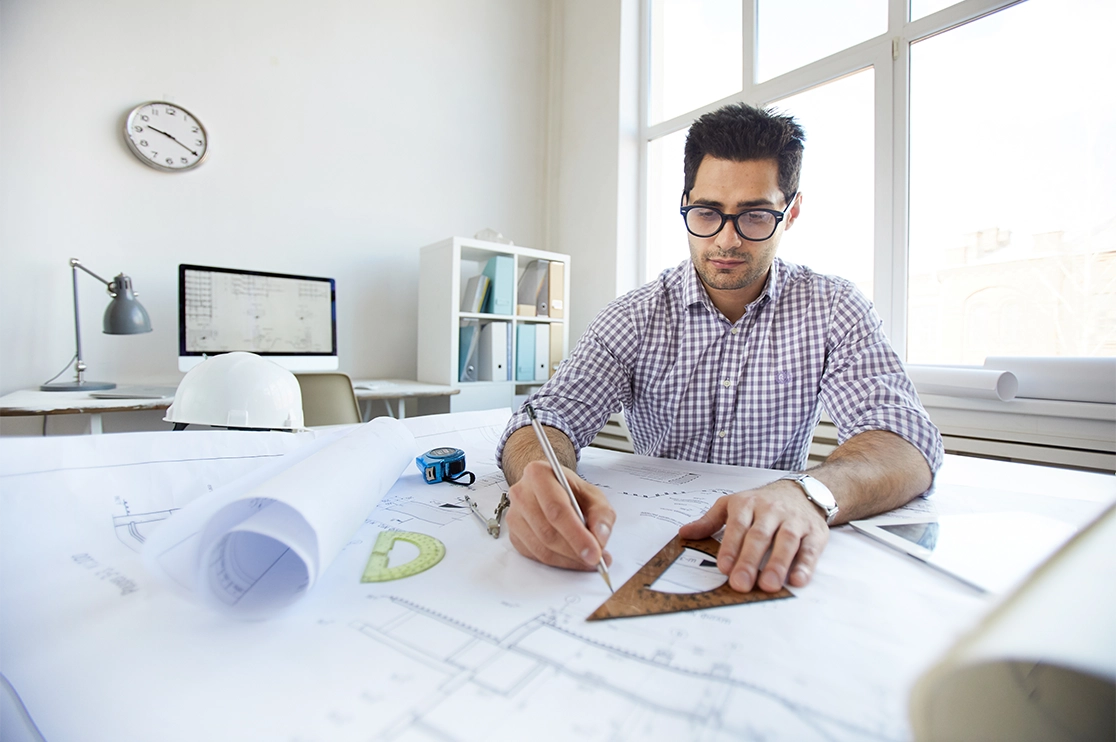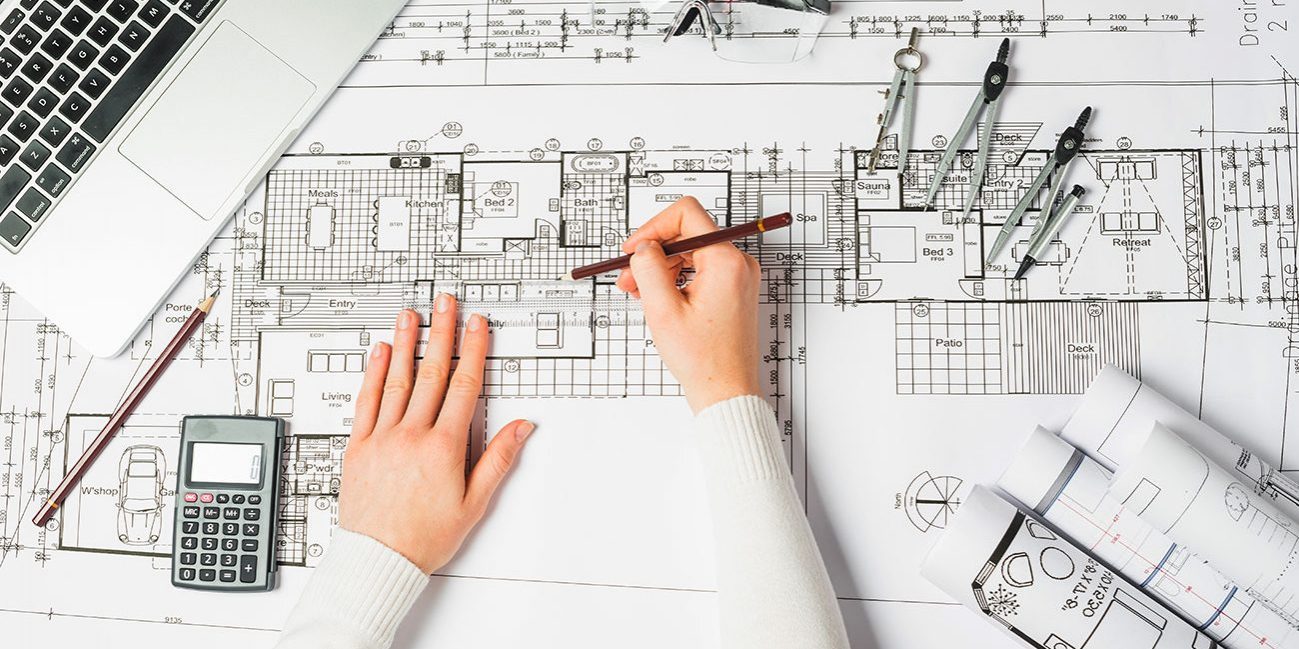Architect Insights on Harmonizing Form and Function
Architect Insights on Harmonizing Form and Function
Blog Article
Comprehending the Diverse Job Paths Available for Aspiring Architect
As an aspiring Architect, you have a world of job courses waiting for you. Whether you're drawn to conventional style or the nuances of lasting style, there's a particular niche that straightens with your interests.
Traditional Architecture: Designing Structures and Structures
Typical architecture focuses on developing buildings and structures that mix capability with visual allure. Your layouts can show social heritage, showcasing local traditions while meeting contemporary needs.
You'll create skills in preparing, model-making, and site evaluation, permitting you to envision and communicate your ideas efficiently. Involving with clients, you'll need to recognize their vision and equate it right into viable designs.
In addition, building codes and sustainability techniques are necessary in your job, ensuring your structures are eco friendly and secure. As you grow in your profession, you'll locate opportunities in domestic, business, or also repair projects, each offering one-of-a-kind obstacles. Embracing typical architecture leads the way for a satisfying profession that admires the past while shaping the future.
Urban Preparation: Shaping Neighborhoods and Public Spaces
As an aspiring Architect, you can play a necessary duty as a metropolitan coordinator, changing just how neighborhoods function and interact. By using neighborhood involvement methods, you'll ensure that residents have a voice fit their environment. And also, incorporating sustainable design principles will assist develop areas that not just satisfy today's requirements yet also safeguard the future.
Role of Urban Planners
While several might consider designers as the sole enthusiasts behind buildings, urban coordinators play an important function fit the broader landscape of areas and public areas. They examine land usage, zoning legislations, and area needs to develop lasting atmospheres that boost quality of life. By teaming up with different stakeholders, you'll assist make parks, transportation systems, and suburbs that advertise social interaction and accessibility. Urban planners likewise focus on ecological considerations, guaranteeing that growths incorporate eco-friendly spaces and assistance biodiversity. Your expertise in spatial layout and neighborhood characteristics enables you to imagine future growth while maintaining social heritage. In this important role, you'll directly affect how individuals experience their surroundings, making every project an opportunity for favorable modification.
Community Involvement Strategies
Reliable area interaction methods are vital for city organizers to guarantee that the voices of locals are listened to and valued in the preparation process. To cultivate meaningful discussion, you need to prioritize open forums and workshops where neighborhood members can reveal their ideas and worries. Usage surveys and social networks to get to a wider target market, making certain diverse perspectives are consisted of. Working together with neighborhood companies can enhance depend on and promote much deeper links. It is very important to offer clear information about decision-making processes and proposed projects, permitting citizens to really feel enlightened and encouraged. By proactively listening and integrating responses, you'll develop rooms that reflect the area's requirements, ultimately resulting in more sustainable and effective metropolitan atmospheres. Embrace openness and continuous discussion for long-term effect.
Lasting Design Principles
When creating city areas, including sustainable style concepts is critical for producing atmospheres that prosper both ecologically and socially. Think about integrating environment-friendly spaces, like gardens and parks, to boost biodiversity and enhance air quality.
Creating with water conservation in mind is additionally vital-- think of rainfall yards and permeable surface areas to handle stormwater. Involving neighborhood participants throughout the planning process warranties that the spaces you develop fulfill their needs and encourage social interaction. By accepting these concepts, you'll contribute to vivid, lasting city landscapes that profit every person.

Landscape Style: Developing Sustainable Exterior Atmospheres
As you check out landscape design, you'll discover important design principles that develop attractive and practical outdoor rooms. Lasting techniques play an important role in making sure these settings thrive while decreasing ecological influence. And also, you'll discover a range of profession opportunities that enable you to make a genuine distinction in just how individuals engage with nature.
Layout Concepts in Landscape
Recognizing design concepts in landscape architecture is important for developing sustainable outside settings that integrate with nature. You'll require to contemplate components like proportion, range, and balance to ensure your designs feel natural and welcoming. Incorporating indigenous plants not just boosts biodiversity however likewise minimizes water use, making your landscape resistant. Think regarding the flow of area and how individuals engage with it; pathways and seating locations need to welcome exploration and leisure. In addition, take notice of seasonal adjustments, designing with products that complement the surroundings year-round (Architect). By prioritizing sustainability and aesthetic appeals, you can create exterior rooms that enhance the neighborhood and promote wellness. Accepting these principles will certainly establish a solid structure for your occupation in landscape style.
Sustainable Practices Review
Sustainable practices in landscape style not just concentrate on aesthetics however additionally prioritize eco-friendly health and wellness and resource preservation. By incorporating indigenous plants, you enhance biodiversity and minimize the demand for chemical fertilizers and pesticides. Executing efficient irrigation systems aids preserve water and minimizes drainage, shielding close-by communities. You can create rooms that advertise soil wellness, such as using natural products and practicing permaculture principles. Additionally, incorporating environment-friendly facilities, like rain yards and permeable pavements, help in stormwater administration and lowers city warm. You contribute to a much healthier planet and supply spaces that cultivate area link when you produce exterior environments with sustainability in mind. Inevitably, these practices assure your styles profit both people and the atmosphere for many years to find.
Profession Opportunities Expedition
With a solid foundation websites in lasting practices, landscape style uses a selection of profession courses that enable you to make a purposeful impact on the atmosphere. Urban organizers frequently collaborate with landscape designers to develop eco-friendly areas in metropolitan setups, boosting city livability. If you're enthusiastic about education and learning, consider coming to be a landscape design educator, motivating future generations.
Lasting Style: Concentrating on Eco-Friendly Practices
As you discover your job in design, embracing eco-friendly techniques can establish you apart in an affordable field. Sustainable design concentrates on developing structures that minimize ecological influence while boosting owner well-being. By including eco-friendly products, energy-efficient systems, and lasting building methods, you'll add to a greener future.
Beginning by gaining expertise of environment-friendly qualifications like LEED or BREEAM, which can boost your qualifications. Think about how all-natural light, ventilation, and thermal performance can maximize design. Team up with designers and ecological professionals to innovate remedies that lower waste and save sources.
Don't neglect the relevance of neighborhood participation-- engaging regional stakeholders can inspire styles that balance with the environment. As clients significantly focus on sustainability, your know-how in eco-friendly practices will certainly not just bring in projects but likewise fulfill your interest for responsible architecture. Embrace this crucial element of the career, and view your career prosper.
Historic Conservation: Securing and Bring Back Social Heritage
While you begin on your architectural trip, consider the crucial role of historical conservation in maintaining our social heritage. This field concentrates on the protection and remediation of significant structures, sites, and frameworks that tell the tales of our past. By participating in historical preservation, you'll assist protect the architectural legacy that forms area identity.
As a historical conservation Architect, you'll analyze historical relevance and examine the condition of structures. You'll work very closely with conservationists and historians to guarantee authentic restoration techniques are employed. This job course permits you to mix imagination with research study, allowing you to make remedies that appreciate original materials and workmanship.
Your work not just adds to sustainability by recycling existing structures yet likewise fosters a sense of pride within neighborhoods. Accepting this path will certainly help you come to be a guardian of history, preserving the tales and aesthetic appeals that enrich our lives.
Inside Architecture: Enhancing Indoor Spaces
Historical conservation and interior style both share a commitment to enhancing the developed environment, but they concentrate on different aspects. While historic conservation stresses maintaining a framework's historic and cultural worth, interior style absolutely nos in on maximizing interior areas for functionality and aesthetics.
As an aspiring Architect, you'll find that interior design allows you to mix creativity with technical skills. You'll develop rooms that not only look great but likewise advertise comfort and performance. This field includes understanding exactly how light, shade, and materials connect within a room, impacting state of mind and usability.
You'll work on different jobs, from household homes to business offices, guaranteeing that each environment satisfies the Architect demands of its owners. By prioritizing user experience, you can change insides right into inspiring and practical spaces, making a considerable effect on exactly how people engage with their environments. Accept the opportunity to improve indoor settings and shape the means individuals work and live.
Industrial Layout: Merging Performance With Looks
Commercial layout plays a vital function in developing items that flawlessly mix looks with performance, making sure that what you utilize daily is not just visually enticing however additionally functional. As an aspiring Architect, you can engage on your own in this area, concentrating on making everything from furnishings to customer electronic devices. Your work includes recognizing individual requirements, materials, have a peek at these guys and producing procedures, allowing you to develop ingenious options that boost everyday experiences.
In commercial style, you'll frequently collaborate with online marketers, manufacturers, and designers, making sure that your designs are not just beautiful yet additionally possible. You'll find out to balance kind and function, focusing on usability without compromising style. By sharpening your skills in laying out, 3D modeling, and prototyping, you'll be well-equipped to bring your concepts to life. This occupation course offers a vibrant setting where imagination meets functionality, making it a satisfying option for architects interested in shaping the products of tomorrow.
Often Asked Questions
What Educational Certifications Do I Required to End Up Being an Engineer?
To become a designer, you'll require an expert degree in design, typically a Bachelor's or Master's. In addition, you'll have to finish an internship and pass the Architect Registration Assessment to practice lawfully.
Are There Qualification Requirements for Different Architectural Career Paths?
Yes, there're accreditation demands for different architectural paths. Architect. You'll need to pass exams, total internships, and sometimes seek specialized training, relying on your picked focus, like landscape design, urban layout, or historical preservation
What Software Application Skills Are Necessary for Engineers Today?

How Can I Gain Practical Experience While Examining Architecture?
You can gain functional experience by interning at architectural companies, taking part in style competitors, offering for area tasks, or teaming up with schoolmates on real-world jobs. These possibilities boost your skills and develop important connections in the industry.
What Job Opportunities Exist Outside Traditional Architecture Firms?
You can discover numerous work chances outside standard design firms, like urban preparation, interior decoration, landscape design, construction management, realty growth, or also functions in sustainability consulting. Each offers one-of-a-kind obstacles and benefits.
Whether you're drawn to traditional style or the subtleties of sustainable design, there's a particular niche that lines up with your interests.When designing city areas, incorporating lasting style principles is crucial for developing atmospheres that flourish both ecologically and socially.As you discover landscape design, you'll discover crucial style principles that develop useful and stunning outdoor areas.Understanding layout principles in landscape architecture is crucial for developing lasting outdoor settings that harmonize with nature.In commercial design, you'll typically collaborate with manufacturers, engineers, and marketing experts, guaranteeing that your styles are not just stunning however additionally feasible.
Report this page